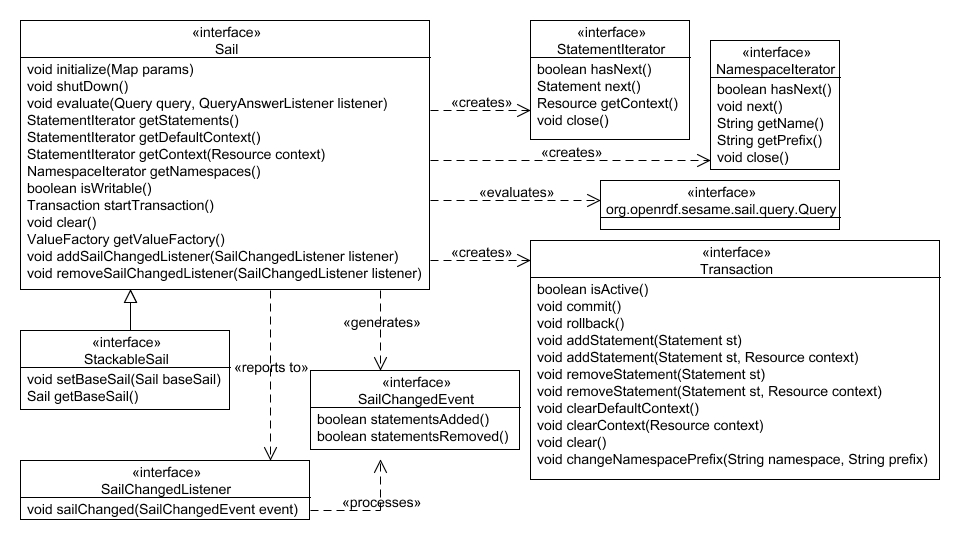The class diagram above shows the main Sail interfaces from package org.openrdf.sesame.sail. The Sail API defines a set of interfaces for RDF stores and inferencers. The main interface is Sail, which defines methods to initialize, query, modify and shut down the Sail object.
For scalability reasons, all data that is extracted from a Sail object is returned in the form of (forward-only) iterators. This allows one to fetch the entire set of stored statements, even if the set is to large to store in main memory. Queries are expressed in terms of the Sail Query Model (see Sail Query Model).
New in Sesame 2.0 is the concept of statement contexts; a grouping mechanism for statements. Statements can now be stored in contexts which are identified by a URI or a blank node. Statements that are not stored in a specific context are stored in the "default context". The Sail interface defines methods for extracting the statements from a specific context, from the default context, or from all contexts combined.
Also new in Sesame 2.0 is proper transaction support. Transactions are modelled as separate objects, which is thought to be the most general approach to modelling transactions: it allows the caller to create transactions per object, per thread, or even per application. Alternatives for matching commits or rollbacks to the appropriate transaction are all more specific, e.g.: based on threads or calling objects.
A Sail implementation may or may not support features like concurrent transactions or transaction isolation; this is not defined by the Sail API. Sails that do not have isolated transaction may block any query calls during transactions; Sails that do not support concurrent transactions might do the same for calls to startTransaction(). Sail implementations should clearly document their behaviour with respect to concurrent access.
Some Sails can be stacked on top of other Sails. These Sails should implement the StackableSail interface. By stacking a Sail on top of another, all calls for the bottom Sail will pass through the Sails that are on top of it (see Figure 5.2, “Example Sail stack”). This feature can be used for a whole range of applications: access control, pluggable inferencers, hooks to external services, etc. A concrete example is a mixed forward-/backward-chaining inferencer, which will wrap transactions to do its forward-chaining work upon commit and extend queries to do its backward-chaining work.
SailChangedListener's can register themselves with Sail objects in order to be notified of any changes in the stored data. Whenever this happens, the Sail will generate a SailChangedEvent and pass it to all regsitered listeners.

